Authentication - Authenticate with access tokens
Access token authentication allows you to handle permissions yourself. When a user authenticates, it’s up to you to let Liveblocks know which rooms they should be allowed inside. This means that you need to manually keep track of which users should be allowed in which rooms, and apply these permissions yourself each time a user connects.
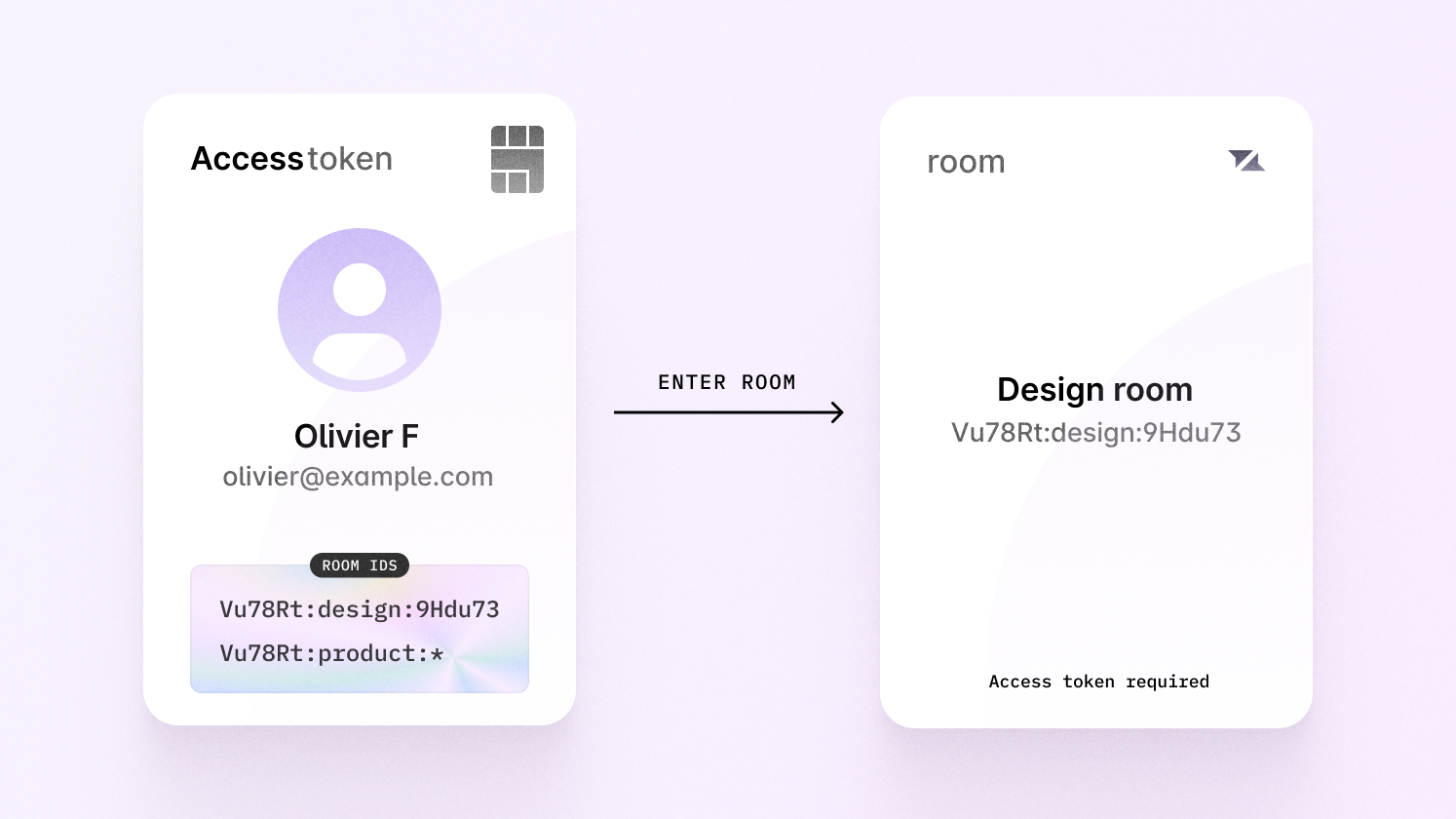
Authenticating
Authenticating with access tokens means creating a
JSON Web Token (JWT) that grants
the current user permission to enter certain rooms when connecting to
Liveblocks. An access token is created by calling
liveblocks.prepareSession
then by allowing access to certain rooms.
Before using access tokens, it’s recommended to read through this entire page, as it explains helpful practices for granting access to rooms. However, if you’d like to get set up now, you can select your framework and read more later.
Permissions
When granting permissions using access tokens, it’s recommended to use a naming pattern for your room IDs. This makes it easy to use wildcard permissions, allowing you to authenticate access to multiple rooms at once. One scenario where this is helpful, is when rooms and users in your app are part of an organization (or workspace), and you need to permit users entry to each room that’s part of this.
Organization hierarchy
Let’s picture an organization, a customer in your product. This organization has a number of groups (or teams), and each group can create documents that other members of the group can view.
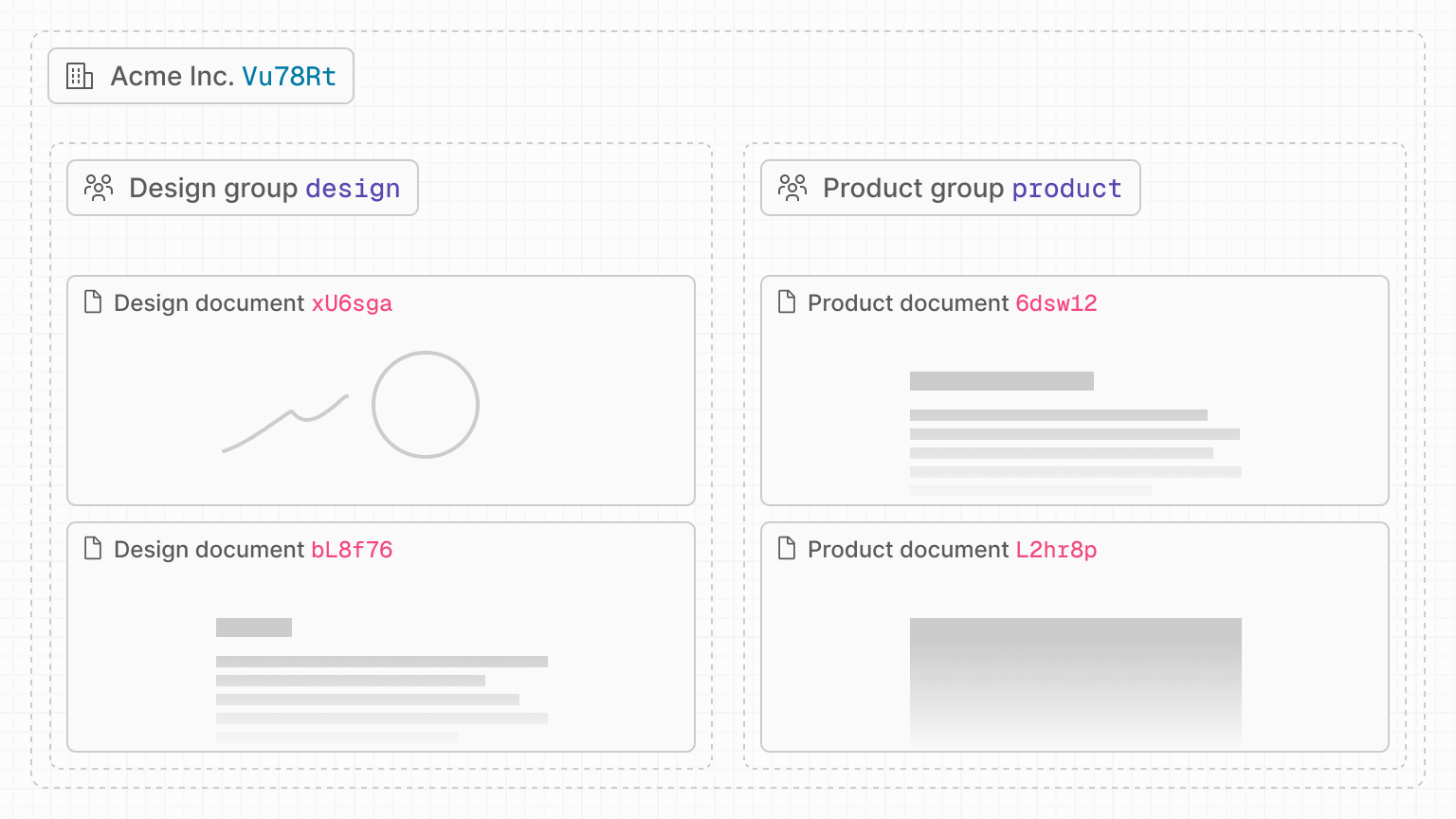
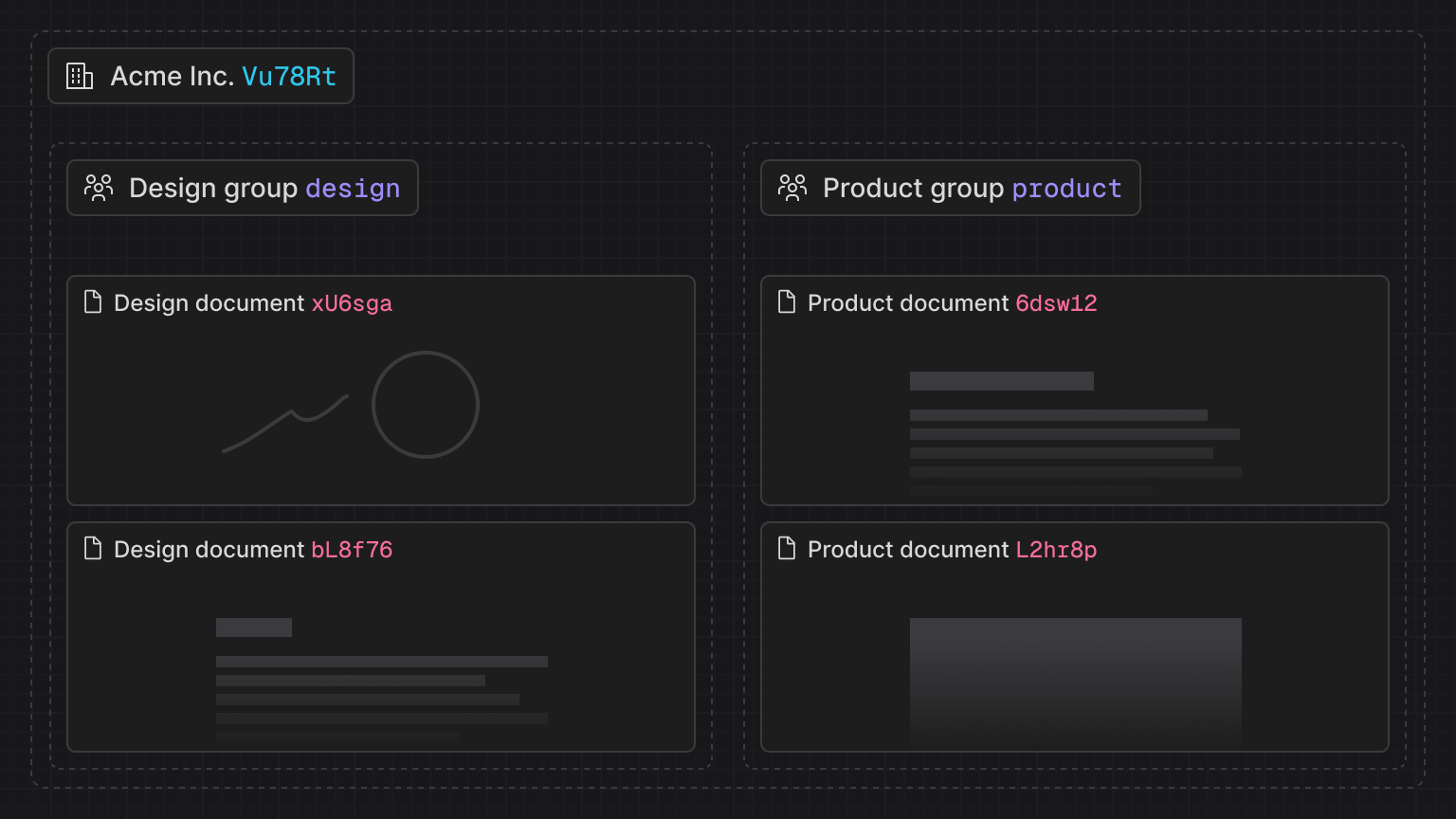
In your application, each organization, group, and document has a unique ID, and
we can use these to create a naming pattern for your rooms. For example, in the
diagram above, the Acme organization (Vu78Rt) has a Product group (product)
with two documents inside (6Dsw12, L2hr8p).
Naming pattern
An example of a naming pattern would be to combine the three IDs into a unique
room ID separating them with symbols, such as
<organization_id>:<group_id>:<document_id>. A room ID following this pattern
may look like Vu78Rt:product:6Dsw1z.
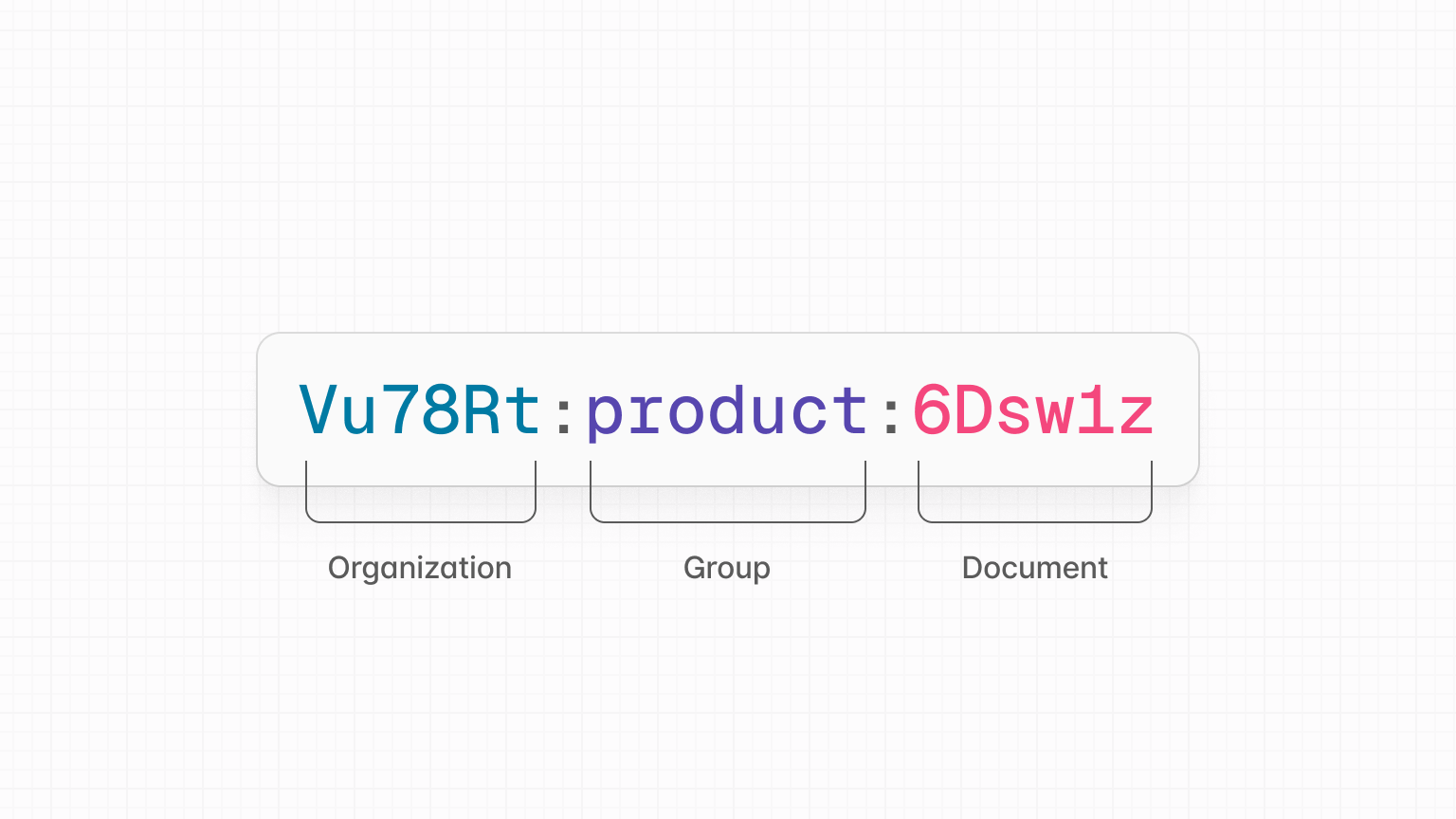
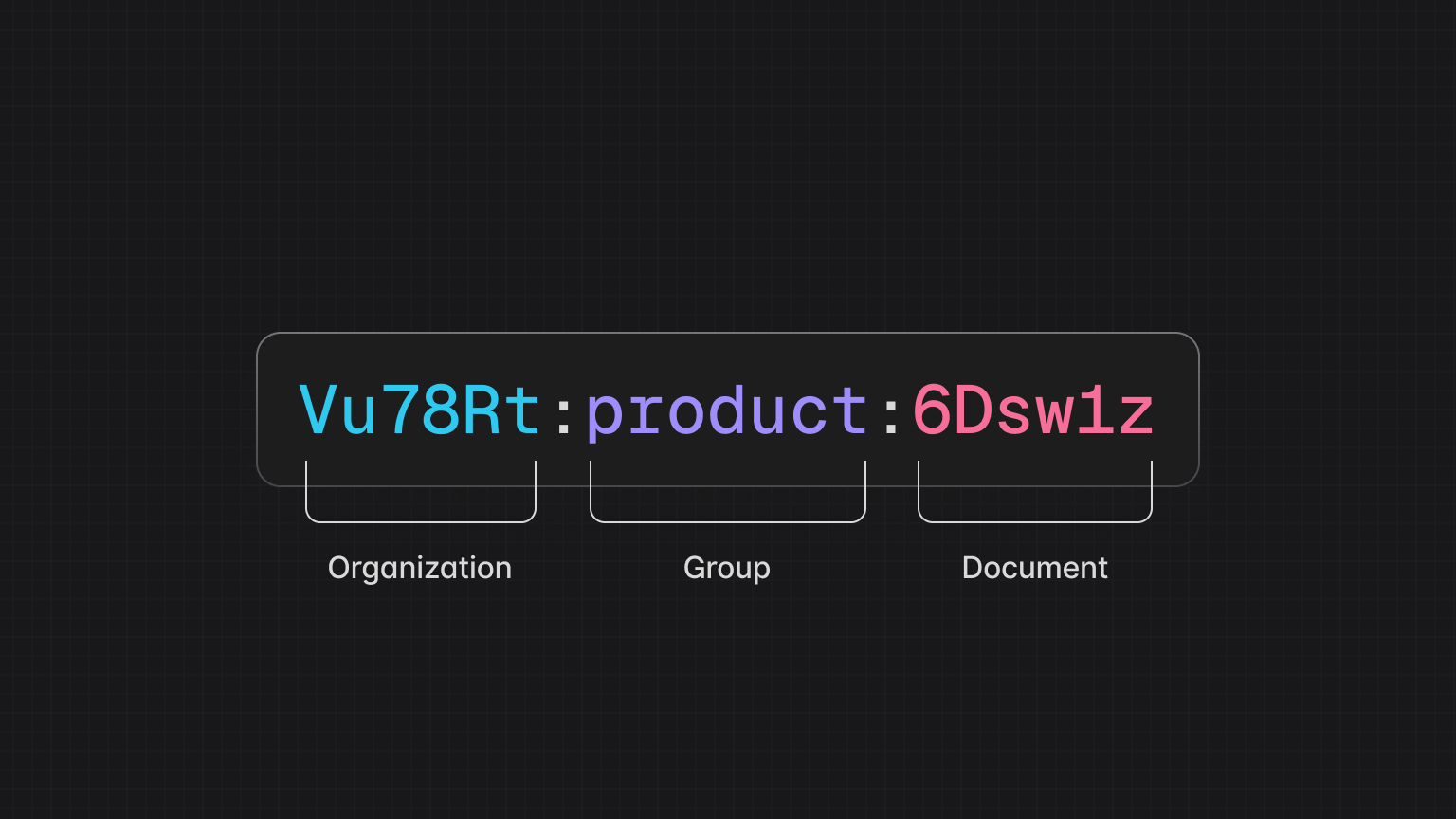
Wildcard permissions
Assuming you’re using the naming pattern displayed above, you can then grant access to multiple rooms at once using wildcards.
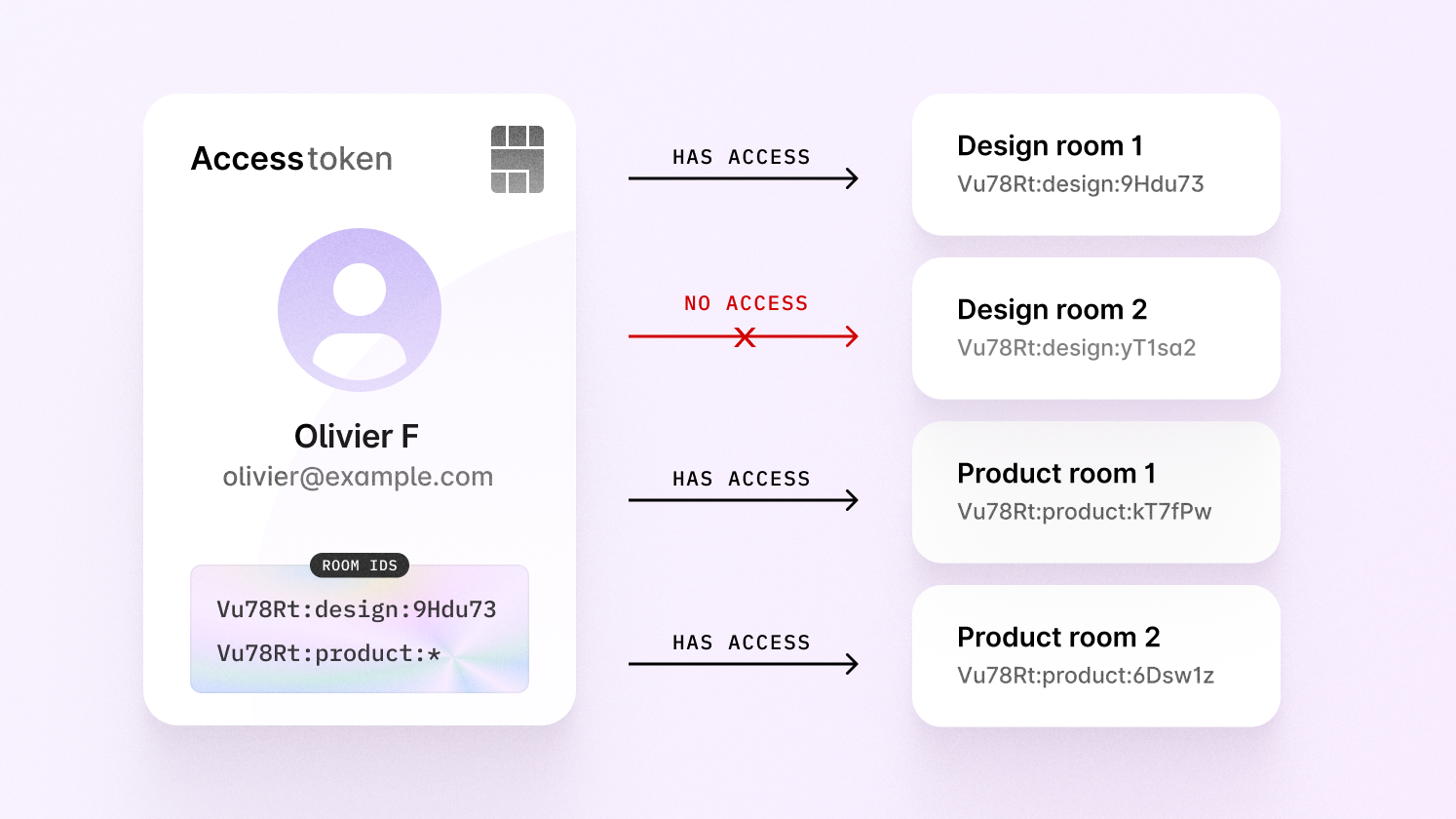
In the image above, you can see that Olivier has access to multiple product
rooms, thanks to the Vu78Rt:product:* wildcard rule. This is how he was
authorized:
Note that you can only use a wildcard at the end of a room ID.
Read-only access
Should we wish to grant read-only access to each room in the organization, we then add another line to enable this.
Limitations
There’s a limitation with access tokens related to granting access to individual
rooms that are part of groups. Let’s say a user has been given access to every
product room in their organization.
This user is able to enter product rooms, but has no access to any design
rooms.
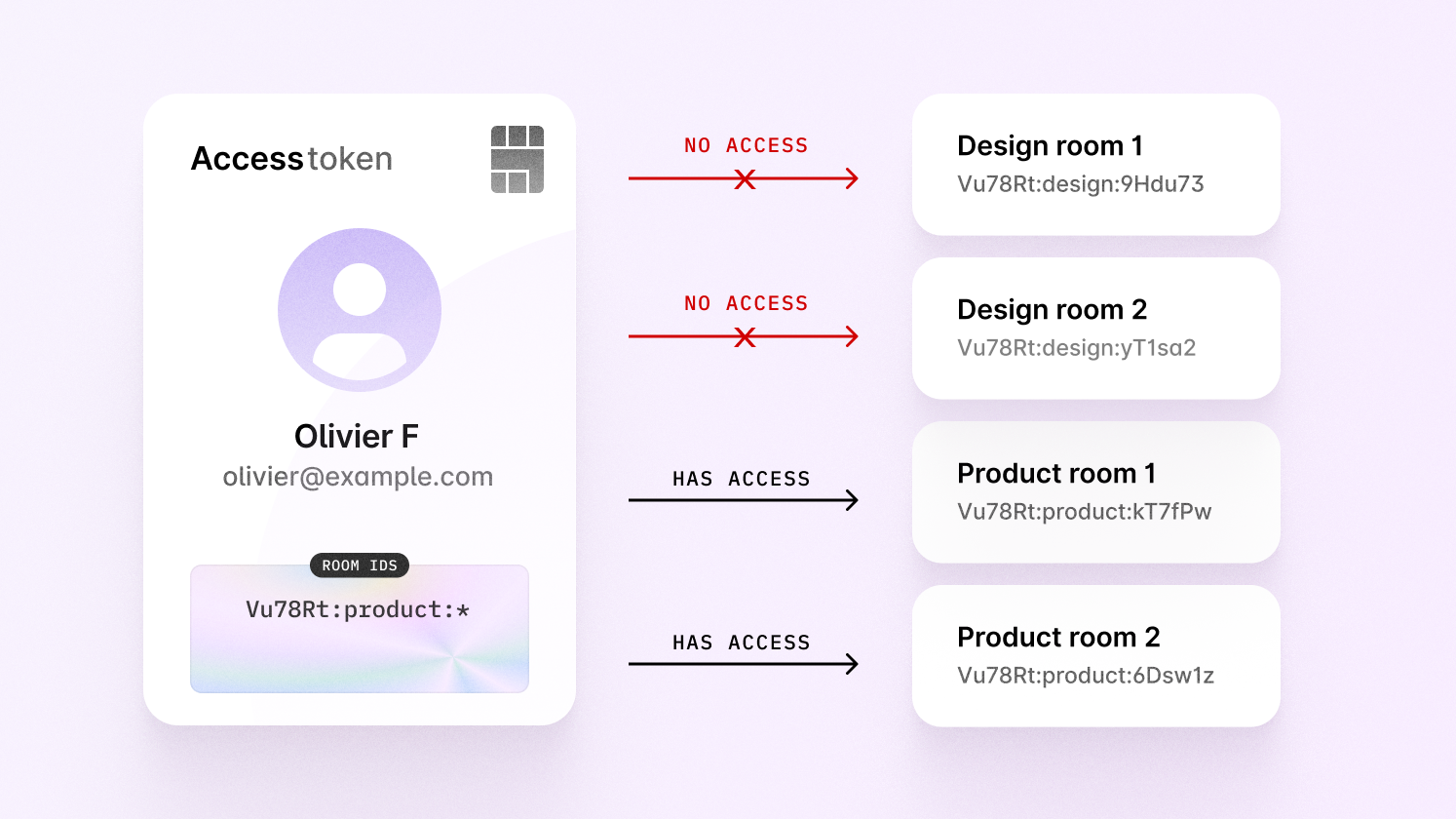
Let’s say the user is invited to a design room via share menu—how would we
grant them access?
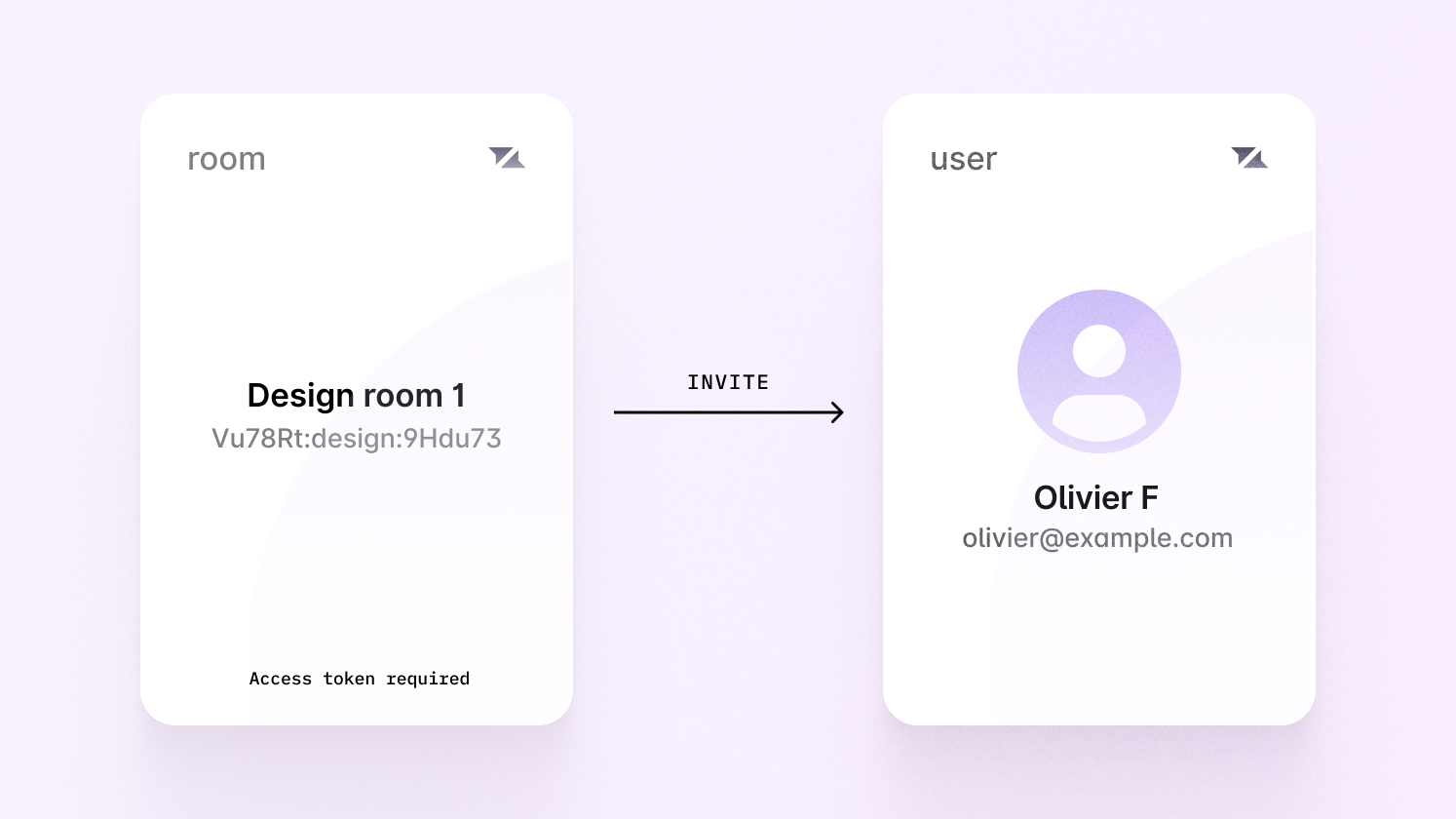
We can’t give them access to every design room with a wildcard, as they
should only have permission for one.
Instead, we would have to manually find the exact room ID without a wildcard, and apply it ourselves—the naming pattern doesn’t work for this room.
To use access tokens you’d have to manually keep track of every room ID where the naming pattern doesn’t apply. This isn’t ideal, and it also doesn’t scale, as the token will need to be refreshed whenever access is granted to new rooms for this to work correctly.
Building complex permissions
For this reason, we recommend using ID tokens for complex permissions. ID token authentication allows you to attach permissions to each room when it’s created or modified, which means you don’t need to check permissions yourself, and no naming pattern is required.
Migrating your current rooms IDs
If your application already has rooms, it’s possible to rename their IDs to be compatible with a naming pattern. Learn more in our room ID migration guide.
Tenants
You can use tenants to compartmentalize your rooms per customers/organizations that you have.
When using Access tokens, you can set the tenantId when you prepare a session.
When a token is generated for a specific tenant, it will only give access to
resources inside this tenant, even if the token has permissions to rooms in
other tenants.
Select your framework
Select your framework for specific instructions on setting up access token authentication.